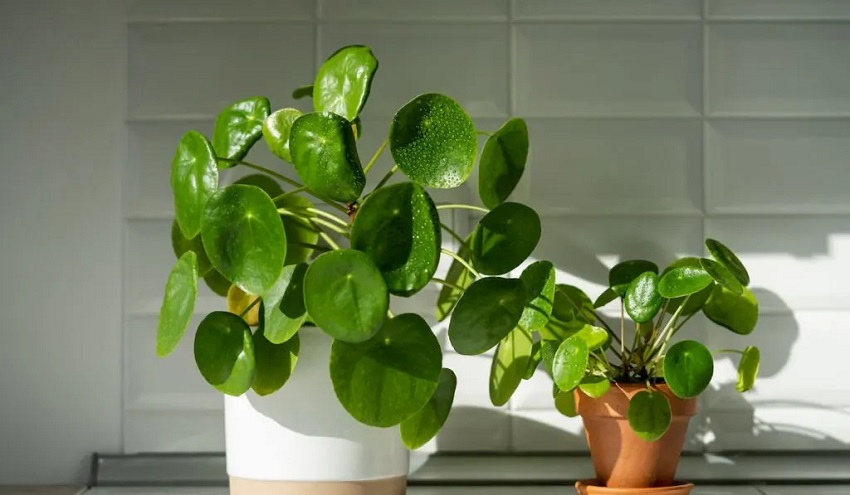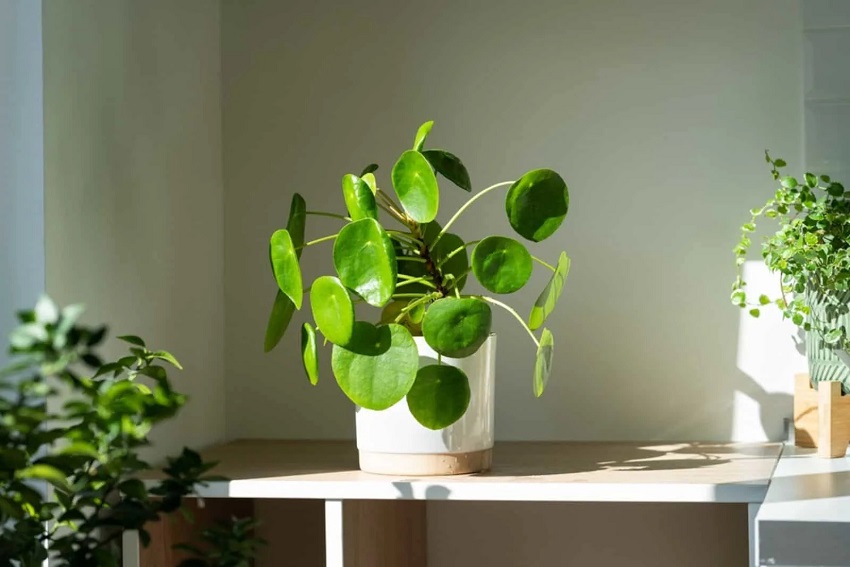
10 Jun Why is my Pilea growing taller?
Welcome to this comprehensive guide on why your Pilea plant is growing taller. If you’re a plant enthusiast or a Pilea lover, you’ve probably noticed your Pilea plant stretching towards the sky and wondered why it’s happening. In this article, we’ll explore the various factors that contribute to your Pilea growing taller, including light, water, nutrients, pruning, and more. So, let’s dive in and uncover the secrets behind your Pilea’s vertical growth!
The Nature of Pilea Plants
Pilea plants, also known as Chinese Money Plants or Pancake Plants, are popular indoor houseplants renowned for their vibrant green leaves and unique circular growth pattern. They belong to the Urticaceae family and are native to the tropical regions of China. Pilea plants are relatively low-maintenance and make great additions to any indoor space, adding a touch of natural beauty.
Light: The Sunlit Path to Growth
One of the primary reasons your Pilea may be growing taller is the availability of light. Pilea plants thrive in bright, indirect light. Insufficient light can cause the plant to stretch and reach towards the nearest light source, resulting in leggy pilea and elongated stems. Therefore, it is crucial to place your Pilea in a well-lit area, preferably near a window with filtered sunlight. If natural light is limited, you can supplement it with artificial grow lights to ensure your Pilea receives the necessary light intensity for healthy growth.
Water: Quenching the Thirst
Proper watering is another essential aspect of Pilea care that directly impacts its growth. Overwatering or underwatering can lead to growth issues, including elongated stems. Pilea plants prefer slightly moist soil, but they don’t appreciate soggy conditions. It’s essential to water your Pilea when the top inch of soil feels dry to the touch. Remember, each Pilea is unique, so it’s crucial to understand its watering needs and adjust accordingly. By providing the right amount of water, you can help your Pilea maintain a compact and bushy form, rather than stretching upwards.
Nutrients: Fuel for Growth
Nutrients play a vital role in the growth and development of Pilea plants. To support healthy growth and prevent excessive elongation, it’s essential to provide your Pilea with a balanced fertilizer. A general-purpose houseplant fertilizer with a balanced N-P-K (nitrogen, phosphorus, potassium) ratio will provide the necessary nutrients for your Pilea’s overall well-being. Follow the instructions on the fertilizer package and apply it during the growing season, typically from spring to summer. Proper nutrition will help your Pilea grow compact and maintain its desired shape.
Pruning: Shaping Your Pilea
Pruning is an effective technique for maintaining the shape and size of your Pilea plant. Regular pruning helps control the vertical growth and promotes a more bushy appearance. When your Pilea starts growing taller than desired, you can trim the stems to encourage lateral branching. Use clean and sharp pruning shears to make clean cuts just above a leaf node. By removing the top portion of the stems, you redirect the plant’s energy to the lower branches, resulting in a more compact and balanced growth habit.
Humidity and Temperature: Finding the Balance
Humidity and temperature also play a role in the growth of Pilea plants. While Pilea plants can tolerate average household humidity levels, higher humidity can promote healthier growth. You can increase humidity around your Pilea by placing a tray filled with water near the plant or by using a humidifier. Additionally, Pilea plants prefer temperatures between 65°F and 75°F (18°C and 24°C). Fluctuations outside this range may affect the plant’s growth and overall health. Maintaining optimal humidity and temperature levels will contribute to your Pilea’s overall well-being and prevent excessive stretching.
Container Size: Room to Grow
The size of the container in which your Pilea is planted can also impact its growth. If the pot is too small, the roots may become cramped, limiting the plant’s growth potential. As a result, the Pilea may resort to growing taller to find more space and resources. To avoid this, ensure that the container is appropriately sized for your Pilea. A slightly larger pot allows the roots to spread comfortably, supporting a healthier and more balanced growth pattern.
Conclusion
Congratulations! You’ve now gained a deeper understanding of why your Pilea plant may be growing taller. By paying attention to factors such as light, water, nutrients, pruning, humidity, temperature, and container size, you can help your Pilea maintain a compact and bushy form. Remember, each Pilea is unique, so it’s essential to observe and adjust care practices accordingly. With the right conditions and proper care, your Pilea will flourish and become a stunning addition to your indoor garden.

No Comments